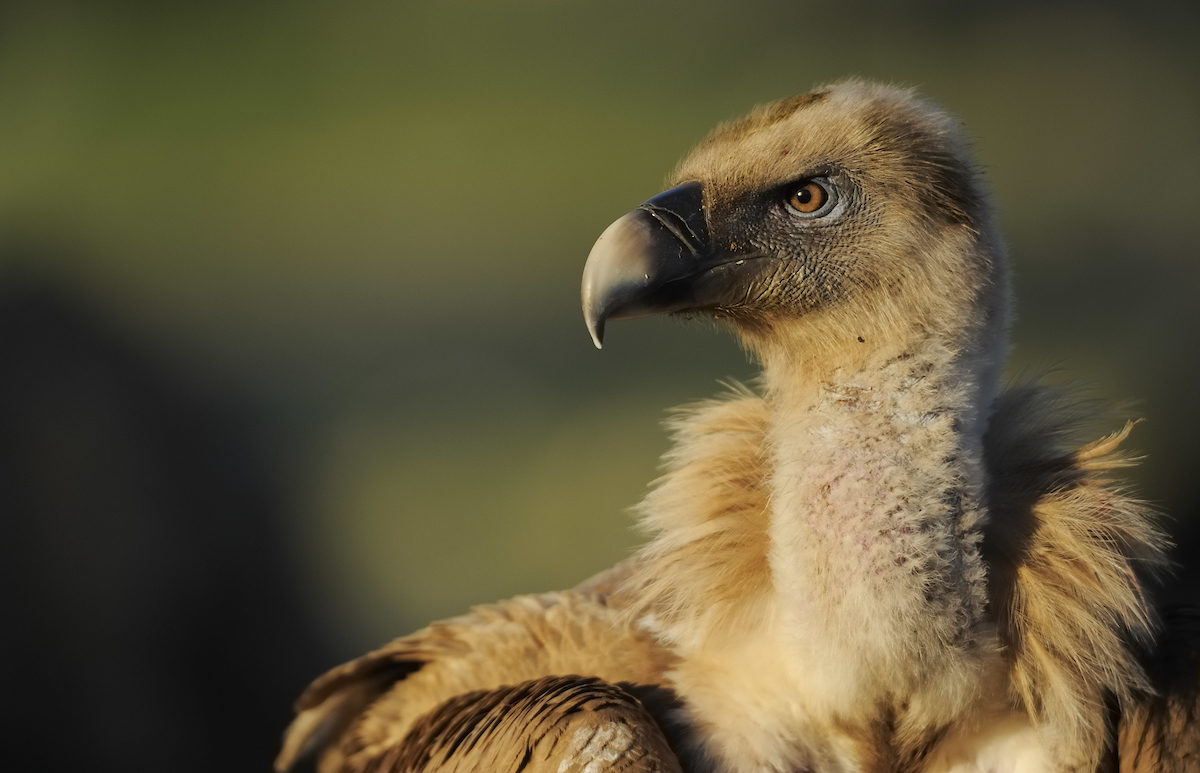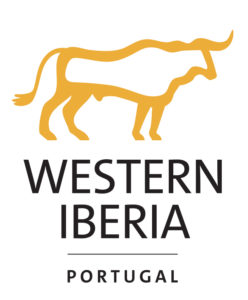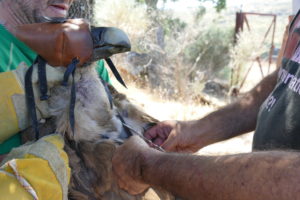A group of five griffon vultures has been tagged with GPS transmitters in the Western Iberia rewilding area in northern Portugal. By shedding new light on the birds’ foraging behaviour, the data collected from the transmitters will support the restoration of natural food chains in the area and underpin the continued comeback of this magnificent species.

Invaluable insight
 The foraging behaviour of griffon vultures in the Western Iberia rewilding area in northern Portugal is set to become a lot clearer, thanks to the tagging of five birds with GPS transmitters. With tagging carried out by members of the local rewilding team and partners at the beginning of July, this is the first time that the area’s griffon vulture population has been monitored in such a way.
The foraging behaviour of griffon vultures in the Western Iberia rewilding area in northern Portugal is set to become a lot clearer, thanks to the tagging of five birds with GPS transmitters. With tagging carried out by members of the local rewilding team and partners at the beginning of July, this is the first time that the area’s griffon vulture population has been monitored in such a way.
The transmitters fitted to the birds – which are mostly breeding adults – are also equipped with an accelerometer, which shows when they are resting, flying or foraging. Data supplied by the devices will provide invaluable insight into where the vultures go to feed and what types of carrion they feed on.
Trophic chain restoration
The vulture tagging was carried out as part of the five-year “Scaling Up Rewilding in Western Iberia” project. Kicking off in 2019, and funded by a generous grant from the Endangered Landscapes Programme, this will see Rewilding Europe (through Rewilding Portugal) and local partners further develop a 120,000-hectare wildlife corridor in the Greater Côa Valley.
An essential element of rewilding the valley is the restoration of trophic chains. At the moment local populations of both griffon and Egyptian vultures rely on a network of artificial feeding stations (so-called “vulture restaurants”) provided by organisations such as ATNatureza. One of the aims of the project is to increase the availability of natural carrion in the area – thereby restoring the so-called Circle of Life – by encouraging Portuguese authorities to allow local farmers to leave domesticated herbivore carcasses in the field, and by boosting the local population of wild herbivores, such as roe deer.
“The tagging will allow us to see whether the vultures are feeding mostly on the carcasses of domestic livestock, or also on wild herbivores, and how often they visit vulture feeding stations,” says Carlos Pacheco, a raptor expert, highly experienced tagger and project manager working for ATNatureza, a Rewilding Europe partner in Western Iberia. “This will ultimately enable us to improve the management of food sources for the birds and support the restoration of trophic chains.”
Rising to the challenge

The griffon vultures were tagged in the SPA Vale do Côa (Côa Valley Special Protection Area) and the nearby Douro International Nature Park. On days in the field, members of the vulture tagging team had to wake up at 4am, in order to reach the capture site in time to set traps. Incredibly intelligent, griffon vultures are typically very wary and won’t land at a site where they think something is out of the ordinary. This not only meant the team had to prepare the site well, but often had to wait for hours as the birds circled overhead.
On several days the patience of the tagging team was rewarded and the vultures eventually did land. As soon as a vulture was caught in a trap the team sprang into action, safely immobilising the bird and placing a hood over its head to keep it calm. Once the vulture was fitted with a transmitter it was immediately released, none the worse for its experience and ready to begin contributing valuable data.
Regulatory impact
Monitoring of raptor species in and around the Greater Côa Valley shows griffon vultures have made a dramatic return to the Western Iberia rewilding area since the 1990s. There are estimated to be around 200 breeding pairs in the project area, which includes the SPA Vale do Côa, Serra da Malcata Nature Reserve and Douro International Nature Park. This comeback would be further supported if especially authorised Portuguese farmers chose to leave the carcasses of their domesticated herbivores in the field.
In 2001, after the bovine spongiform encephalopathy (BSE or “mad cow disease”) crisis, the European Union prohibited the abandonment of livestock carcasses in such a way. This had a huge impact on vulture populations, which relied on these carcasses in the absence of wild herbivores.
Working for change
Today the subsequent relaxation of EU legislation has allowed livestock carcasses to once again be left in nature (under special conditions), but not all European countries have chosen to implement this change. Until very recently, this meant that farmers were allowed to leave carcasses in large swathes of the Spanish countryside, yet their Portuguese counterparts were compelled to remove them. This disparity was graphically highlighted in recent research, which showed GPS-tracked griffon and black vultures on the Iberian peninsula almost exclusively shunning Portuguese territory.
Recent changes to Portuguese regulations mean that the carcasses of pigs, sheep, goats and horses (exclusively from farming) can once again be left outside of artificial feeding stations, in areas which the Institute of Nature and Forest Conservation (ICNF) considers important for vulture conservation.
“Going forwards, the Rewilding Portugal team and partners will work with national authorities to further develop an extensive network of farmers in the Côa Valley and Douro International Nature Park who are authorised to leave carcasses in the field,” expains Sara Aliácar, a conservation officer attached to the Rewilding Portugal team who took part in the tagging.

Collaboration
Sponsored by Mossy Earth, the tagging was carried out by Associação Transumância e Natureza (ATNatureza), together with members of the Rewilding Portugal team. As scientific collaborators, CIBIO-InBIO and Movetech provided the transmitters and will also support with data analysis and the dissemination of results.
Another group of griffon vultures will be tagged towards the end of the “Scaling Up Rewilding in Western Iberia” project. This should highlight what impact changes in the availability of food have had on the birds’ behaviour and distribution.
